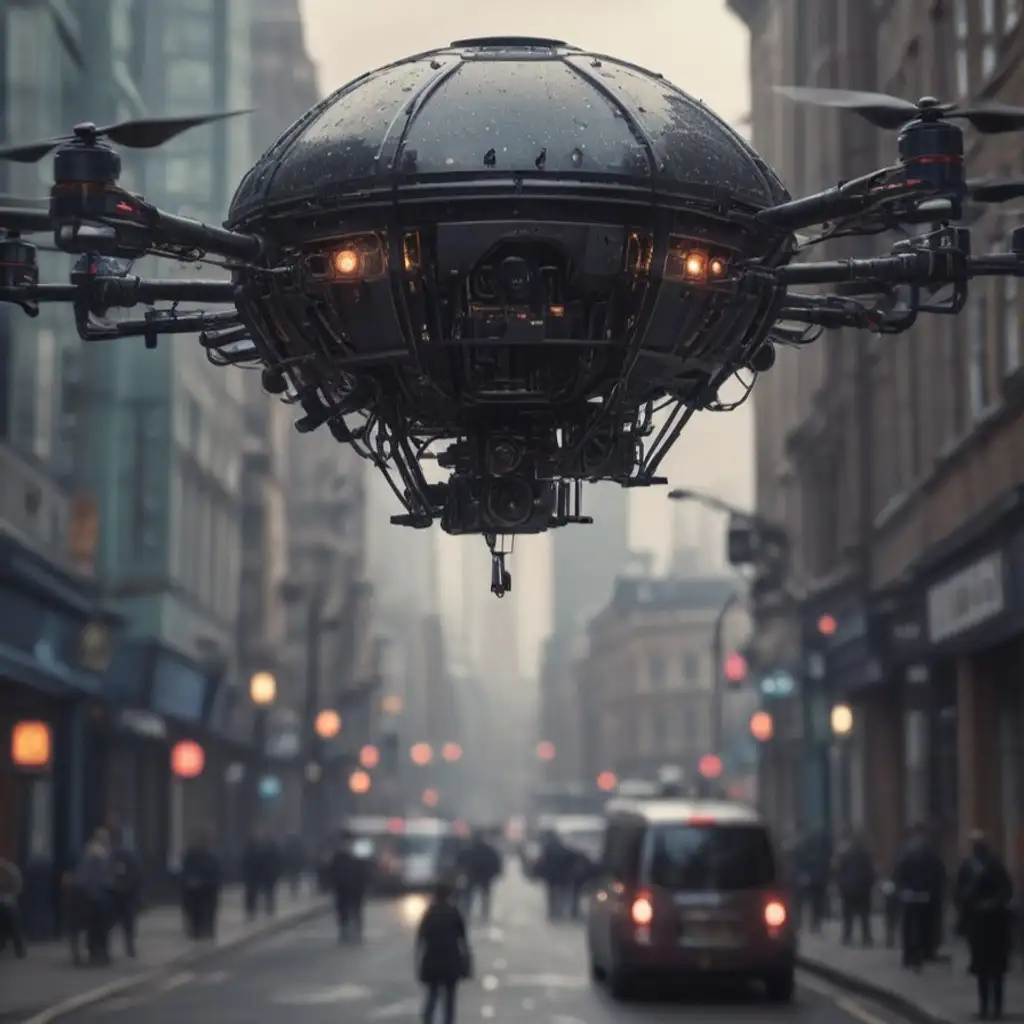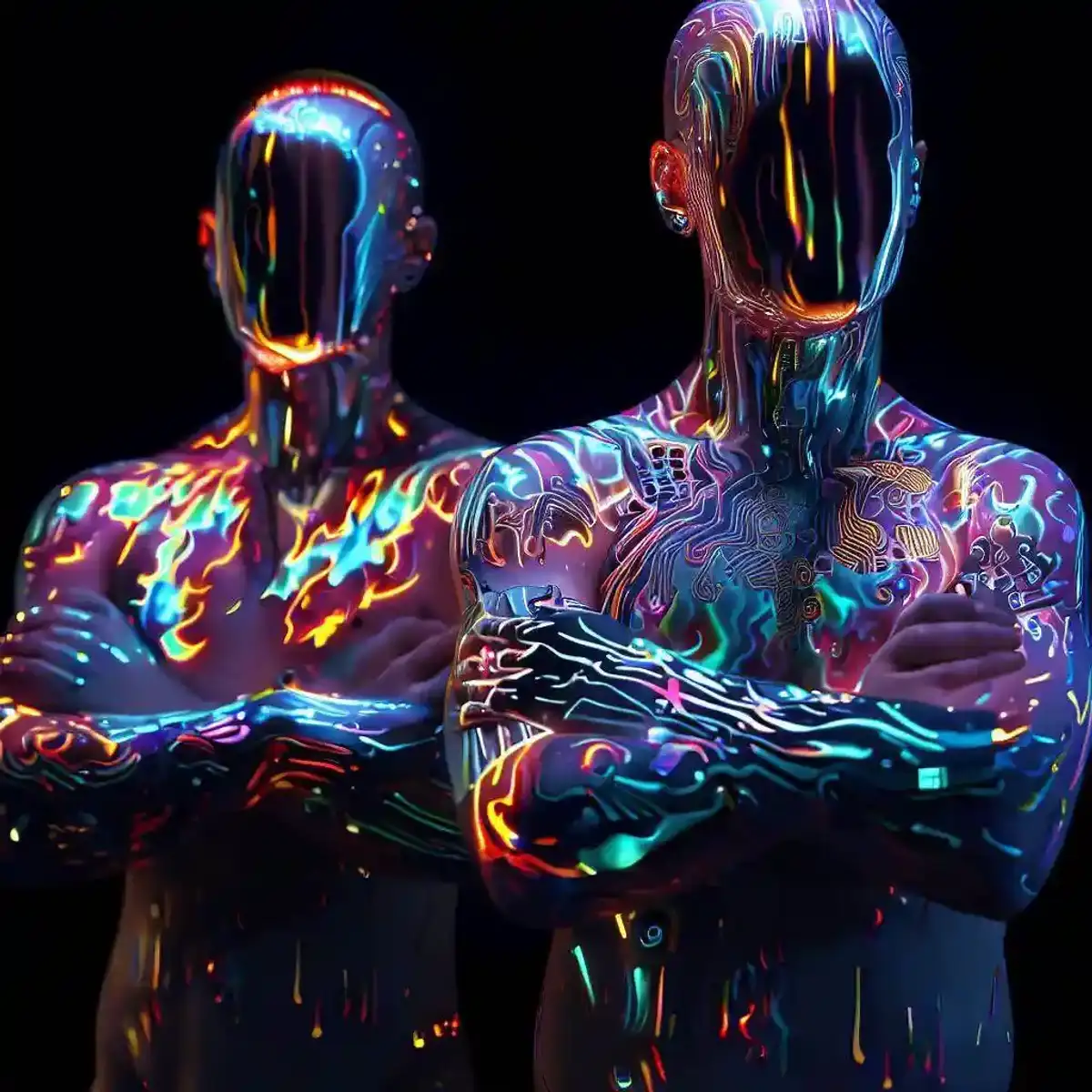Science fiction has always been a source of inspiration, offering glimpses into potential futures shaped by technological innovation. What’s remarkable is how often science fiction accurately predicts real-world advancements. From Star Trek’s communicators predating modern smartphones to the video calls envisioned in Blade Runner, science fiction has an uncanny ability to foreshadow what’s to come. This article explores the fascinating interplay between today’s technology and science fiction, highlighting how innovations are blurring the lines between fiction and reality.
The Cyclical Relationship Between Sci-Fi and Tech
One striking aspect of this convergence is the cyclical relationship between science fiction and technology. Science fiction often inspires technological development, and those developments, in turn, inspire new science fiction narratives. This continuous feedback loop demonstrates how imagination and innovation fuel each other, driving progress and shaping the future.
Beyond simply predicting specific gadgets, science fiction has also demonstrated a remarkable ability to foresee broader technological trends. Works like H.G. Wells’ “The World Set Free” (1914) accurately predicted the development of the atomic bomb, while his “The Land Ironclads” (1903) envisioned the use of armoured fighting vehicles, foreshadowing the development of tanks. Even the World Wide Web was predicted by William Gibson in his 1984 novel “Neuromancer.” These examples highlight the power of science fiction to not only imagine the future, but also to influence its trajectory.
From Sci-Fi to Reality: Technologies That Arrived Ahead of Schedule
The history of technology is filled with examples of innovations that were once considered pure fantasy but have since become commonplace:
-
Wireless Communication: From Star Trek’s communicators to Dick Tracy’s wristwatch radio, the idea of wireless communication across vast distances was a recurring sci-fi theme that has become reality.
-
Video Calls: The ability to see and hear someone remotely, explored in films like Blade Runner and Metropolis, is now an integral part of our lives via video conferencing.
-
Self-Driving Cars: While not yet ubiquitous, companies like Tesla and Waymo are making significant strides in autonomous driving technology, bringing us closer to the automated vehicles envisioned in The Jetsons and Total Recall.
-
Artificial Intelligence: From HAL 9000 in 2001: A Space Odyssey to the sentient robots in Asimov’s novels, AI has been a staple of science fiction. Today, AI powers everything from virtual assistants to medical diagnoses.
-
Virtual Reality: The concept of immersive virtual worlds, explored in works like “Pygmalion’s Spectacles” and The Matrix, is now a reality through VR technology used for gaming, training, and therapy.
Blurring the Lines: Current Technologies with Sci-Fi Overtones
Several current technologies have distinct science fiction overtones, pushing the boundaries of what’s possible:
-
3D Printing: This once futuristic concept is now used to create everything from prototypes to medical implants, revolutionising manufacturing.
-
Gene Editing: CRISPR technology is making the gene editing portrayed in sci-fi a reality, raising both hopes for curing diseases and ethical concerns.
-
Brain-Computer Interfaces: Companies like Neuralink are developing brain-computer interfaces, a staple of cyberpunk fiction, with the potential to treat neurological conditions and enhance human capabilities.
-
Quantum Computing: Emerging from theoretical physics, quantum computers have the potential to solve complex problems beyond the reach of classical computers, revolutionising fields like medicine and AI.
Solving Real-World Problems: Technology Tackles Sci-Fi Challenges
Science fiction often presents solutions to real-world problems, and technology is now catching up:
-
Sustainable Cities: Smart city technology, using IoT sensors and connected devices, is creating more efficient and sustainable urban environments, monitoring everything from energy consumption to air quality.
-
Advanced Healthcare: AI diagnostics, human augmentation and enhancement technologies are improving access to care, disease detection, and personalised treatment.
-
Data-Driven Solutions: Data pooling and AI are being used to track and address issues in agriculture, health, and the environment, helping optimise resource allocation and predict outcomes.
Ethical and Societal Implications
As we move closer to a world resembling science fiction, we must consider the potential consequences:
- Privacy concerns around facial recognition and AI surveillance
- Bias and discrimination perpetuated by AI algorithms
- Job displacement due to automation and AI
- Inequality exacerbated by uneven access to human enhancement technologies
- Environmental impact of technology production and disposal
- Existential risks posed by advanced AI surpassing human control
Science fiction often serves as a cautionary tale, prompting discussions about responsible innovation. It explores potential societal impacts, grappling with issues like climate change, inequality, and the ethical dilemmas of technological advancement.
The Future of Technology
Looking ahead, potential developments could further blur the lines between science fiction and reality:
- Sophisticated AR enhancing our daily lives with real-time information and interactive holograms
- Autonomous vehicles, including drones and flying cars, revolutionising transportation and urban planning
- Personalised medicine tailored to an individual’s genetics, lifestyle, and environment
- Sustainable technologies addressing climate change, like renewable energy and carbon capture
- Expanded space exploration, with human colonies on the Moon or Mars and potential encounters with extra-terrestrial life
Embracing the Future with Awareness
The convergence of technology and science fiction is exciting and transformative. As we shape a future once confined to imagination, it’s essential to approach these advancements with awareness, considering ethical implications and societal consequences.
This convergence is about understanding ourselves and our place in the universe. Science fiction provides a framework for exploring technology’s potential while reminding us of the importance of human values and responsible innovation. By embracing the future with awareness and commitment to ethical principles, we can harness technology’s power to create a better world for all.
What technological advancement from science fiction would you most like to see become reality? Share this post with your predictions about which sci-fi technologies might emerge next.
For an immersive exploration of future technology and its impact on humanity, check out “The Birth of Cogenant,” available now at major online bookstores.


